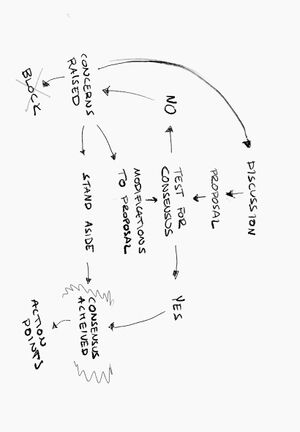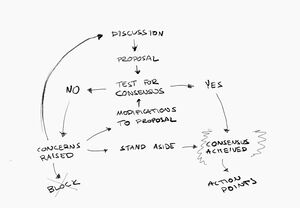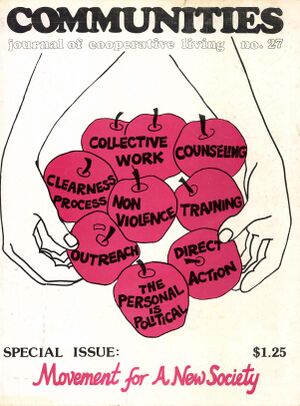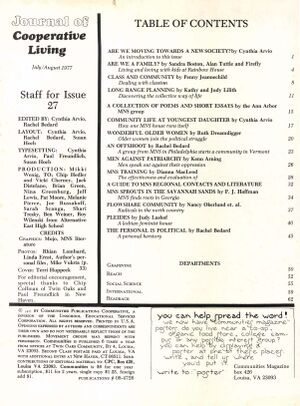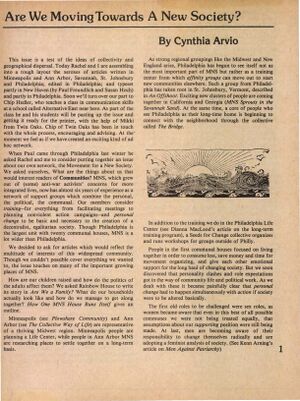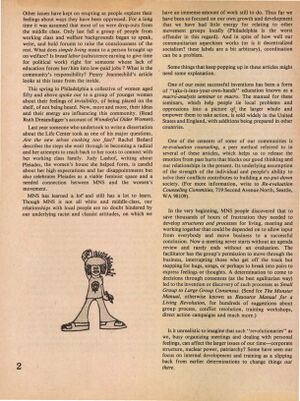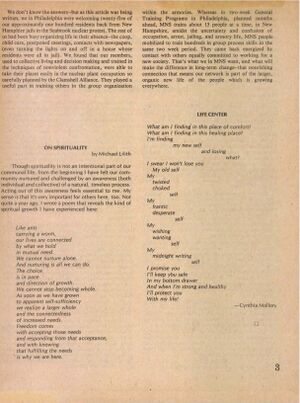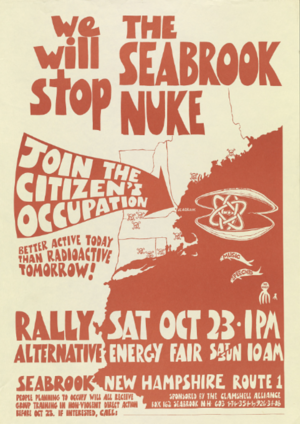On consensus, in two parts
Part I: A short and partial history of one genealogy of consensus[1]
“We are so accustomed to majority rule as a necessary part of democracy that it is difficult to imagine any democratic system working without it. It is true that it is better to count heads than to break them…but the party system has proved very far from providing the ideal democracies of people’s dreams.”[2]
This quote takes us slightly astray from where I want to go, but it gets us thinking along a helpful track. For one, why is it so challenging to imagine democracy without majority rule? For many of us, the image of democracy is limited to its representational forms—someone else acting on our behalf, our direct role relegated to that of a voter, and the often entrenched non-action, bickering, and corruption endemic within systems built on political parties and coalition governments. The aim of this text is to think democracy otherwise, proposing consensus as a means for doing democracy. Consensus is understood primarily as a method for decision-making, but I want to argue that it also offers a way of organizing methods of thinking and processing in groups that can create infrastructure to develop non-hierarchical collaborations, build community, identify conflict, and gestate shared values and intentions. As community-organizer and facilitator George Lakey puts it, “Consensus is a structural attempt to get equality to happen in decision making.”[3]
Surely many people in many places at many times throughout history have been concerned about how to make decisions in a way that feels equal and fair for all involved. It goes without saying that there are likely many genealogies of consensus; methods for collective decision-making must have many histories.[4] One particular history of consensus that I was first exposed to in my late teenage years can be traced through a Christian religious community called Quakers. Founded in the 1650s by George Fox, the core philosophy of Quakerism lies in a devotion to peace and nonviolence, coupled with the belief that God is present in everyone, as a sacred light within each of us, thus nullifying the need for clergy to interpret God's will. This democratic belief in equal access to the divine led to a disavowal of formal ministry and set forms of worship, as well as a rejection of many prevailing Christian hierarchies. For example, even at its founding in the 17th century, women were understood to have equal access to God and could therefore minister to the public and have leadership roles in the community.
'Communities: Journal of Cooperative Living,' Pdf
As it relates to our focus here, this also deeply influenced how communities of Quakers organized themselves. In the tradition of Quaker worship, community members sit together silently until one feels moved to share an insight or message with the congregation. Quakers still use this philosophy for organizational functions too, for business meetings, and social or political initiatives. Similar to a meeting for worship, participants take turns expressing ideas, not necessarily responding directly to one another. Discussion continues until there is a sense that all participants feel agreement about what is to be done, or once all participants can at least accept the direction the decision has taken. Though this is often time consuming, Quakers are invested in consensus because within the origin of its practice is the notion that each of us contains the presence of the divine. As historian A. Paul Hare writes,
“For over 300 years, the members of the Society of Friends have been making group decisions without voting. Their method is to find a sense of the meeting, which represents a consensus of those involved. Ideally, this consensus is not simply unanimity or an opinion on which all members happen to agree, but an actual unity, a higher truth which grows from the consideration of divergent opinions and unites them all.”[5]
Because of this long-standing practice, those raised within the Quaker faith were intimately familiar with this method of decision-making and increasingly brought these methods into other spheres of their lived realities. Without knowing this history, it may come as a shock that the use of consensus decision-making in most radical and leftist organizations in the U.S. and Europe today—from Occupy Wall Street to Extinction Rebellion—has roots in the beliefs and practices of the Quakers.
As mentioned above, a core tenet of Quakerism is peace, not solely passive in the sense of not engaging in violence and war, but also through actively working to engender non-violence, in a similar vein, perhaps, as other religious groups give alms or engage in community service projects. The post-war period in America was mired in violence and struggle both at home and abroad. The after-effects of the atomic bomb and the rise of nuclear power, the Vietnam War and other US imperialist incursions into East Asia, and the struggle for civil rights, Black power, and the women’s liberation movement saw a concomitant rise in televised and broadcasted violence (and its normalization) within public life in 1960s America. It was in this context that in 1966 a group of activist Quakers founded A Radical Quaker Action Group. Focused primarily on creative, direct, nonviolent campaigns, as a way of making public examples and methodologies for making peace and protesting violence, one of A Radical Quaker Action Group’s key methods was using sailing boats and the distinct legal territory and status of the ocean as a means for sharing aid. In one such action, they sent antimalarial and antibacterial drugs and bandages to Hiroshima, and in a later action they sailed with similar supplies to Vietnam. The idea behind this was to identify means of doing direct nonviolence, not symbolic actions or protests in hopes of changing state policy. For A Radical Quaker Action Group, war was viewed as an inherent aspect of the system of capitalism, and social inequality was understood as a form of violence maintained by the threat of state violence. To work for peace and equality, to abide by the Quaker testimony of peace, one must engage in social change. This was not to say, however, that they did not have creative ideas about how to enact social change. One of their key tenets was the notion of “image defeat.” In addition to the hoped-for impact of direct action, they aimed to create attention-grabbing, imaginative stories and images that would garner outsized media attention, overshadowing or even replacing news coverage sympathetic to the state and state violence. For example, when their boat the Phoenix sailed to Vietnam, it appeared on the front cover of many newspapers, supplanting the image of the U.S. making war with an image of a small group of radical Quakers sailing to Vietnam with food and supplies.
A Radical Quaker Action Group eventually disbanded, but their impact reverberated both within Quaker activist circles and more broadly amongst organizations tied to the New Left. Some people involved with these earlier activities were then involved in the formation of another group, Movement for a New Society (MNS). Self-identified as a feminist, radical, non-violent organization, Movement for a New Society was active from 1971 to 1988. With chapters in about a dozen cities across the U.S. and a hub in Philadelphia, the ideas they developed connected with many other activist struggles at the time, such as feminist liberation, environmental organizing, and anti-nuke activism. At its core, the group’s ethos was about sharing knowledge with one another and connecting the internal workings of community organizing with the external goals of these campaigns, through trainings and typical activist organizing, but also by practicing unlearning and doing self-work. This manifested as an ongoing commitment to doing anti-oppression training among them and a study format they termed “macro-analysis” seminars. The purpose of these seminars was to ensure they committed to and made time for study and inquiry, not just goal-oriented aims. Through this community study structure, they could practice recognizing and undoing their own internalized racism, sexism, homophobia, and classism. The macro-analysis seminars and study groups were modeled on extant popular education efforts of the time, especially from the civil rights movement, feminist consciousness-raising, and the ideas of critical pedagogue Paulo Friere.
In its first pamphlet, MNS positioned its distinct understanding of community-organizing, and declared its opposition to,
“Traditional forms of organization, from [the multinational corporation] ITT to the PTA [Parent-Teacher Association]…for they exhibit the sexism and authoritarianism we seek to supplant. Our goals must be incorporated into the way we organize. Thus the movement we build must be egalitarian and non-centralized.”[6]
At its core, MNS was concerned with creating different social relations, and saw its own community as a place to practice these ideas in the here and now, while working for these changes within society as a whole. This led MNS to integrate the seemingly external efforts of political organizing with the internal growth of becoming more socially aware and empathetically attuned, as a way of living closer to and more in accord with the world they wanted to see. Practically speaking, MNS built infrastructure to facilitate livelihoods, such as housing co-ops, food co-ops, a publisher, reading rooms, and “counter-institutions” as they termed them, but this philosophy also deeply influenced how they did process, leading to the development of infrastructures for organizing people, dialogue, and decision-making. From this came structures such as affinity groups, macro-analysis seminars and spokes-councils.[7] These developments and the way of thinking that fueled them exemplify the concept of “prefigurative politics,” as coined by sociologist Wini Breines, who identified a central tenet of the work of Students for a Democratic Society (SDS) as the effort to “create and sustain within the lived practice of the movement, relationships and political forms that ‘prefigured’ and embodied the desired society.”[8]
MNS had the opportunity to promulgate many of these practices more widely because of their involvement in organizing with the Clamshell Alliance to protest the proposed Seabrook Nuclear power plant in 1977. Due to the collective organizing efforts, 1400 people were peaceably arrested, collectively refused bail, and were then able to use the time held for two weeks in large armory buildings to collectively study, organize, and train themselves, testing many of the methods MNS had elaborated. Since then (and via other routes), techniques of horizontal organizing and consensus decision-making have spread and morphed across various social movements, and more broadly through universities, socially-engaged artistic practices, and many other activist adjacent fields.
While it might feel commonplace to say, “let’s work in a horizontal way,” “let’s decide this through consensus,” or “let’s create affinity groups for organizing a multi-part project,” it feels important to trace these genealogies and the histories and contexts that brought us here. In one context, consensus is fetishized as a goal in and of itself, while in another, it is demonized due to the tepid, watered-down decisions it leads to in lieu of complete political deadlock. In analyzing the development of direct democratic structures such as Occupy and other recent social movements, commentators David Graeber and Cindy Milstein have both suggested that “Consensus is both our ends and our means of struggle.”[9] I am sympathetic to this notion, and I too want to be part of a society that is participatory, egalitarian, and self-organizing. But I think we need to understand consensus as multifaceted and complex, with both histories and contexts tied to these methodologies, worthy of attention and study, not a catch-all phrase and simple concept that can magically make direct democracy possible in and of itself.
Part II: Some ideas for doing consensus together
What is consensus?
Consensus is a collective creative problem-solving process, created through:
- receptive, perceptive, and empathic listening
- digestion and connecting—finding commonalities and threads between ideas and concerns (and noting differences and dissonance)
- synthesizing and translating—voicing propositions that bring together divergent ideas, concerns, and approaches
What is consensus good for?
Movement for a New Society members saw at least three key benefits to the consensus process:
- it helps to empower more reserved and less experienced participants, creating a more even field for all
- it keeps in check the sometimes-competing egos in an organization or group
- the deeply considered discussion aspect of consensus is useful in a group’s early state when it is “searching” for new ideas and building unity in the group
Some conditions needed for consensus:
- Shared desires
The group needs to share a clear common desire or goal(s), and be willing to work together toward this. It needs to be clear what needs to be decided upon collectively and what can be left to individuals. Discuss together what our goals are and how we will get there. When conflict and differences inevitably arise, return to the common goal(s) to refocus the conversation.
- Nurturing trust, accountability and openness
We need to be able to trust that each of us arrives with the intention of working together. We also need to nurture spaces where all voices are heard and valued. Sometimes there is much to do, long before decisions get made, just to get to a point wherein a community or group of people is ready and able to speak together in that way. This isn’t an effort that can be skipped. George Lakey uses the metaphor of a container,
“I call the kind of social order that supports safety, a ‘container.’ The metaphor of container suggests that it might be thin or thick, weak or robust. A strong container has walls thick enough to hold a group doing even turbulent work, with individuals willing to be vulnerable in order to learn.”[10]
Part of accountability is also accountability to ourselves, to listen internally and openly express our desires (what we’d like to see happen), and our needs (what we must have happen in order to be able to support a decision). If everyone is able to talk openly then the group will have the information it requires to take everyone’s positions into account and come up with a solution that everyone can support. Consensus will inevitably fail if needs aren’t shared publicly or if they are ignored when voiced.
- Commitment to practicing consensus together
Everyone needs to be willing to be present in all senses of the word. This means being deeply honest about what it is you want or don’t want, and listening empathetically to what others have to say. Everyone must be willing to shift their positions and opinions, and to notice assumptions they may have been leaning on. Further, we need to be open to alternative and unexpected solutions, and accept the “good enough.”
- Enough time and capacity
Consensus takes effort, so it’s not wise to use it for decisions that don’t warrant such energy. Learning to work together with others in this way builds over time, but each scenario or decision deserves consideration and attention. Rushing a process is like shooting it in the foot; inevitably needs or crucial information will be missed or ignored and thus decisions taken will require reworking and revision later. Cultivate circumstances that make it feasible for your group to have time and capacity for this work. Be realistic about what’s possible with the time you all can collectively give, determine limits ahead of time, and make sure this is clearly shared with everyone. Think of concerns and needs that will pull people away from this process and collectively arrange for these needs ahead of time, such as food, rest breaks, suitable space, childcare, etc.
- Honoring process
It’s a necessity to have a clear (and accountable) process for making decisions and to do everything possible to ensure that all those present have a shared understanding of how the process works. If specific methods, hand signals, etc. will be used, this needs to be outlined and made clear for everyone. A clear statement or outline of what is aimed for (see “Shared desires”), and information and planning for the meeting (see “Enough time and capacity”) should be voiced from the outset. Honoring the process means listening to where it takes you collectively even when it leads you to an unexpected conclusion. It also means collectively agreeing to take care of the conversation, noticing when things stray off-topic and holding collective responsibility toward guiding the process, while being mindful of the limits and capacity of all involved.
- Being present
In consensus we all need to actively participate. We need to listen intently to what everyone has to say, while also voicing our thoughts and feelings about the matter. The process should hold space for all involved. This is possible by being present as a listener but also by being open and vulnerable to share and to speak. Being present asks that each of us proactively imagines and seeks solutions that look out for everyone involved.
